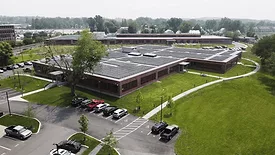Environmental Monitoring
Wastewater Recycling Takes the Lead
Read More
Birchtech Teams Up with CEC to Expand Water Testing Services for Utilities Nationwide
Partnership to accelerate water testing for utilities
Read More
Inside the EPA and Army Corps During the Government Shutdown
Federal workers given legal reprieve as environmental oversight grinds to a halt
Read More
How Data Centers Could Heat Your Neighborhood: Ashley Besic on Turning Digital Waste into Clean Energy
Can Data Centers Heat Our Buildings? Inside the Growing Push to Reuse Waste Heat Through Thermal Energy Networks
Read More
DOE Unveils Two New Supercomputers and a Faster, Smarter Way to Build Them
The U.S. government is battling hard to be king of A.I.
Read More
Hula Lakeside: How Geothermal Energy Is Redefining Workspaces in Vermont
From an Old Factory to a Very Green Future
Read More
USGS Unveils Interactive Map Revealing the Hidden Geology Beneath US
The project aims to help standardize geologic data across state and federal agencies
Read More
DOE Partners with NVIDIA and Oracle to Build Nation’s Largest AI Supercomputer
Nvidia Hit a $5 Valuation Earlier This Morning
Read More
Cleaning Up Hazardous Waste at Former Glycerin Traders Site in La Porte
The EPA launched a new effort this week,
Read More
Kansas Teen Wins Prestigious National Environmental Award
Olathe Student’s Innovative Fish-Breeding Project Earns EPA’s Top Youth Honor
Read More
Dig deeper into the drilling and water supply industry!
Build your knowledge with The Driller, covering the people, equipment and technologies across drilling markets.
SIGN UP NOWCopyright ©2025. All Rights Reserved BNP Media.
Design, CMS, Hosting & Web Development :: ePublishing
.webp?height=168&t=1762401828&width=275)

.webp?height=168&t=1762313000&width=275)






.webp?height=168&t=1761750681&width=275)

